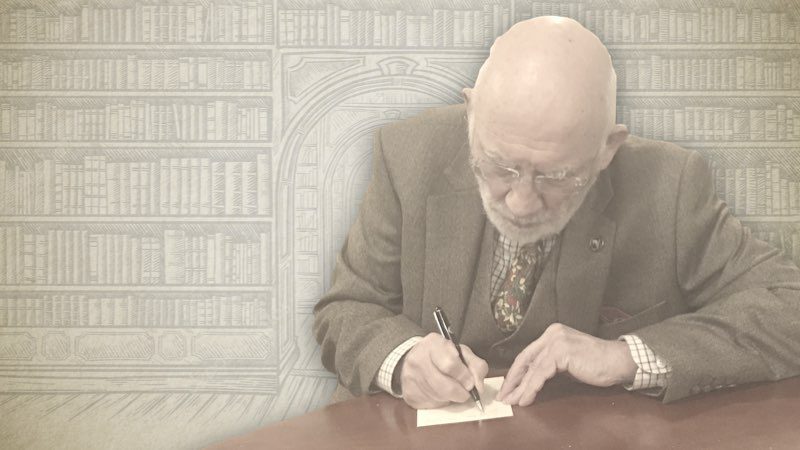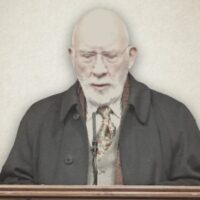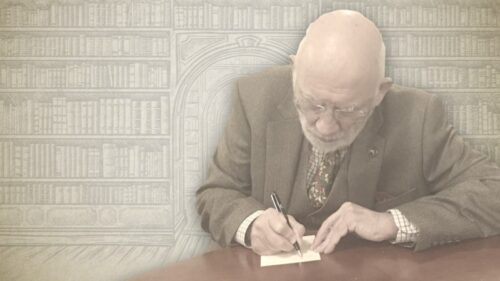
John Chamberlain: And His Exemplary Missionary Success In India
[Posted With Permission, Peter Meney Of “New Focus“]
Baptist missionary John Chamberlain (1777-1821) and his wife were called to India before the Baptist Mission Society (BMS) there had been able to organise itself for practical missionary work. There had thus been very few converts prior to their arrival, especially compared with the work of former and contemporary missionaries in India which very quickly gained true converts in large numbers. Only Dr John Thomas, one of the first Baptists, appeared to be pulling his weight in the early days of the mission but that often proved disastrous as Thomas could not handle money though his preaching gained the first mission converts amongst the Portuguese and Indians.
A good number of thriving churches had already been planted in India, including several in the trading towns Serampore and Calcutta where the first Baptists were given a warm Christian welcome. Just as the ‘Serampore Trio’, as Ward and Marshman, later joined by William Carey, were called, were opening doors to the Indians, the Chamberlains joined them so they were amongst the first active Baptist missionaries in India. Indeed, one might truly say they were more active in the Lord’s Vineyard than most others.
How the Chamberlains came to India
The Chamberlains were set apart for the Indian mission field in England on 21 April, 1802 and a few days later embarked for India via the USA. The couple departed from the States on 17 August with Mr and Mrs Nott, Mr and Mrs May, Dr and Mrs Johns, Miss Green, Miss Chaffin and Mr Hall, all Baptist missionaries seemingly long forgotten. Unlike Carey’s illicit passage to India, Chamberlain, his wife and the missionaries who accompanied him, kept to international law by sailing to India via America. During the voyage Mrs Chamberlain gave birth to a daughter who sadly died about a week later. During their time at sea Chamberlain read widely, including books by Jonathan Edwards, Bishop Hall, James Hervey, Plato on Socrates and Isaac Watts. The couple also sang a number of Watts’ hymns. Chamberlain also read diligently in his Greek New Testament and in books concerning much esteemed missionaries such as David Brainard.
On 26 January, 1803, the group of Baptist missionaries arrived at Calcutta where they were welcomed by Carey and Ward and proceeded to Serampore on the following day. There were now some 25 Baptist missionaries in and around Serampore who were given absolute freedom by the Danes and in no way handicapped by the British who were particularly lenient to Carey who now worked both in Calcutta and nearby Serampore under the auspices of both governments. The Baptist missionaries moved under the security of Danish passports made available by Governor Bie of Serampore who had turned to Christ through the witness of the Danish-Halle mission in India. Sadly, the Chamberlains’ second child, John Sutcliffe Chamberlain, named after their friend the Baptist pastor in Olney, who was born on 17 November, 1803, died on 2 February, 1804.
William Yates’ testimony of Chamberlain
Without the testimony of William Yates, we would have little information on Chamberlain. I have often been critical of Baptist missionary William Yates’ handling of the original texts in his Bible translations and his insistence that Christian baptism was to be understood through Arian interpretations of Greek prepositions, often confusing meanings with signs. Soon he was rivalling Carey with his own ‘translations’ and Bengali Grammar and left the BMS to delve into one passing fancy after another. However, his compiled Memoirs of Mr John Chamberlain Late Missionary to India published in 1826 is a real gem and a great tribute to Yates’ subject. Most of the contents were taken directly from Carey’s and Chamberlain’s journals and letters. Though Yates gives the dates of much of Chamberlain’s correspondence, he very rarely gives evidence concerning to whom they were written. So, too, his remarks concerning ‘Mr. C.’ could refer to several people, including William and Felix Carey and Chamberlain himself. My quotes are mainly from Yates’ work and that of Aritra Rudra’s Ph.D. research essay, Reverend John Chamberlain: An Unheard Story of a Baptist Missionary in 19th CE Bengal (2016). Rudra gives the numerous names of the tiny villages which Chamberlain evangelised on horseback, by boat or on foot. Otherwise, I would not go as far as Rudra in claiming that Chamberlain’s work had never been adequately described until Rudra wrote his paper as he and I lean heavily on Yates and the BMS archives but agree that church historians whether Baptist or Non-Baptist, have neglected Chamberlain greatly.
Chamberlain’s ability to itinerate
Chamberlain has often been wrongly mentioned as a victim of British governmental suppression in a country ruled over not only by the British but also by the Portuguese, Dutch, Danes and French. The Jesuit-minded Portuguese were far longer in India than the British and did not give up their Indian colonies until the nineteen-sixties. So, too, many areas of India were still free from Colonialism in Chamberlain’s days and had cooperated closely with foreign Protestant missionaries from the seventeenth century on. So, we must place Chamberlain in his own geographical and historical environment. Many European Christians still believe wrongly today that India was one united country under the British Raj throughout the eighteenth and nineteen centuries and the gospel was unknown until the time of the Baptist Indian Mission. Yet India had Christian churches from the first century A.D. onwards and Reformed evangelical churches since the seventeenth century. When Carey reached India, he found that well over a hundred sound, evangelical European missionaries had prepared the way for him from Tamil Nadu to Bengal, besides the many hundreds of Indians who preached where Europeans feared to go or were unprepared because of their lack of knowledge of the Indian languages.
Chamberlain experienced hardly any opposition in India after he decided that the Serampore-Calcutta stay-at-home way of missionary life was not as it should be and began his own itinerant ministry. Chamberlain’s missionary ideals were far closer in practice to the theoretical missionary aims formerly held by Carey in his Enquiry and from which Carey sadly soon departed.
Evangelising Northern India
Thoroughly trained in missionary strategies and well prepared by his Christian calling, Chamberlain was as near as one perhaps could possibly get to the ideal missionary. Rather than not being allowed to evangelise the north, Chamberlain spent 19 years witnessing to the northern Hindus and only once in 1810, as far as his own letters show, was he advised not to go to the border territories at that particular time because of great unrest there when his life would have been at risk. No one was allowed then to visit the border regions apart from soldiers and British officials. Contrary to the picture painted by such as Julius Richter in his A History of Missions to India (1906), it can be said, on the whole, that Chamberlain was treated very well by the British authorities even when we would have expected him to have been hindered by them. Carey can be said to have profited the most from the British East India Company and the local British government, perhaps in a way detrimental to missionary activities, as he basked in their grants of very high salaries and academic titles which kept him from pioneer missionary work. Carey also gained the support of the Church of England chaplain in Serampore and Calcutta without which the Baptist missionaries would never have had the doors opened to them for their enterprises.
Chamberlain relates how he was once questioned on entering a northern territory by a British official concerning his lack of credentials to prove that he was of British nationality and free to travel through the British colony. Such credentials were demanded of all at this time of unrest which was growing in the north and would eventually spread throughout all India. The Black Hole of Calcutta was now history but the Great Indian Mutiny was in preparation. Though Chamberlain had no documents to prove that he was a British citizen, he found a friendly officer who, after questioning Chamberlain vouched for the fact that he was British and allowed Chamberlain to evangelise the northern areas though he had no official permit to do so.
A preference for an itinerant ministry
From the start Chamberlain confessed that he did not wish to settle in Serampore but tour the country as an itinerant missionary. This plan had been largely given up by the Serampore Trio, though they encouraged their Indian converts to engage in such work. As Chamberlain moved from Bengal to the Punjab, he wrote to a fellow missionary, probably Felix Carey, who was using Cutwa on and off as a base:
Preaching and riding about are what suit me; and hence I conclude, that it is my work to itinerate, and to publish abroad the Holy Scriptures, which through the divine favour, you have been enabled to prepare us for the nations, some to sow and some to water; some for this department, and some for another. It is not to be expected that all should be qualified alike.
At the time (15 October, 1810), Chamberlain was working on Hindi, Marathi and Punjabi languages in preparation for moving north.
Chamberlain sets up his base at Cutwa
On writing the above, Chamberlain had set up a base at Cutwa, on the right bank of the Hooghly River, before setting off to the Punjab. His aim being to enter the unevangelised fields of Hindi and Punjabi speakers whose languages he was learning to speak diligently. It took Chamberlain a year to master Hindi before leaving Bengal for even more northern parts. At first Felix Carey often joined Chamberlain on his long journeys but his most faithful companion over months at a time was Krishna, whom he called Krishno, his Indian friend and companion who was a first-class itinerant preacher going on tours of up to five months at a time quite alone and unafraid. So many European missionaries have been given centuries of praise but surely most of them lagged behind Krishno in their endeavours and Krishno should be remembered all the more diligently. Chamberlain was often accompanied by his wife who stood by her man through all the dangers of entering unknown territory where the people looked on Christians as evil, drunken rogues.
River evangelism
Chamberlain gave up the idea of riding through the country on horseback. Journeys were difficult due to the rough country and many rivers and lakes. He realised that the natives usually travelled by boat and followed their advice and practice which made his work easier and speeded it up. A gigantic staircase leading down to the sea in Cutwa made embarking in boats easier as much of the shores of the Hooghly and Ganges were marshy.
From then on, Chamberlain became one of the greatest Baptist soul winners. However, his hard life took its toll and by the time he turned 40 he was a very ill man. Still, however, if he did not preach three times a day in the open pastures, he felt he was not doing his Christian duty. His sickness gradually broke him down and at the age of forty-four it was decided to send him back to England for a while hoping that the climate and the doctors there would be able to restore his health. After only three weeks during the long voyage to Britain, Chamberlain went to meet his Saviour, rejoicing in his trust in the Lord but sad that he had not lived a more fruitful life. Compared to most others his life was as fruitful as could be. A co-passenger wrote, ‘he died on 6 December 1821, 20 days after we set sail, and his remains were committed to the deep in Latitude 9. 30. North, Long. 85 East.’
Indian Aritra Rudra ends his biography of Chamberlain, leaning on the Calcutta Bengal Obituary of 1851, with the words ‘No one missionary in India possessed such ardent attachment to missionary labours or showed indomitable courage and zeal as Chamberlain did in service of Lord Jesus.’
May the Lord bless Chamberlain’s memory to us and may it be an encouragement to all Christians to follow Christ’s Great Commission all the days of our lives.
George M. Ella, born February 1939 in Yorkshire, England, has lived most of his life on the European Continent. He is a retired Senior Civil Servant formerly employed in teaching, post-graduate teacher-training, chairing examination boards and curricula work. He holds degrees from London, Hull, Uppsala, Essen, Duisburg and Marburg universities with doctorates in English Literature and Theology. Dr. Ella has written regularly since the seventies for a number of magazines and newspapers and published numerous books on Church History, including biographies of William Cowper, William Huntington, James Hervey, John Gill, Augustus Montague Toplady, Isaac McCoy and Henry Bullinger besides works on doctrine and education. He is currently finishing the third volume of his series 'Mountain Movers'; a biography of John Durie; a work on Law and Gospel and further study material for the Martin Bucer Seminar. Dr. Ella is still internationally active as a lecturer and is a Vice-President of the Protestant Reformation Society. He is keenly interested in missionary work and has written on the spread of the Gospel amongst the Same people of Lapland, the people of India and the Native Americans. This present volume follows Dr. Ella's 'The Covenant of Grace and Christian Baptism', also published by the Martin Bucer Seminar. George Ella is married to Erika Ella, nee Fleischman, a former government administrator, and they have two sons Mark (41), Director of a Polytechnic College in Bremerhaven and Robin (39), Leading Senior Physician in a newly-built Geriatric and Psychiatric clinic in Dessau.
George Ella on Doctrinal Matters
George Ella's Biographical Sketches




